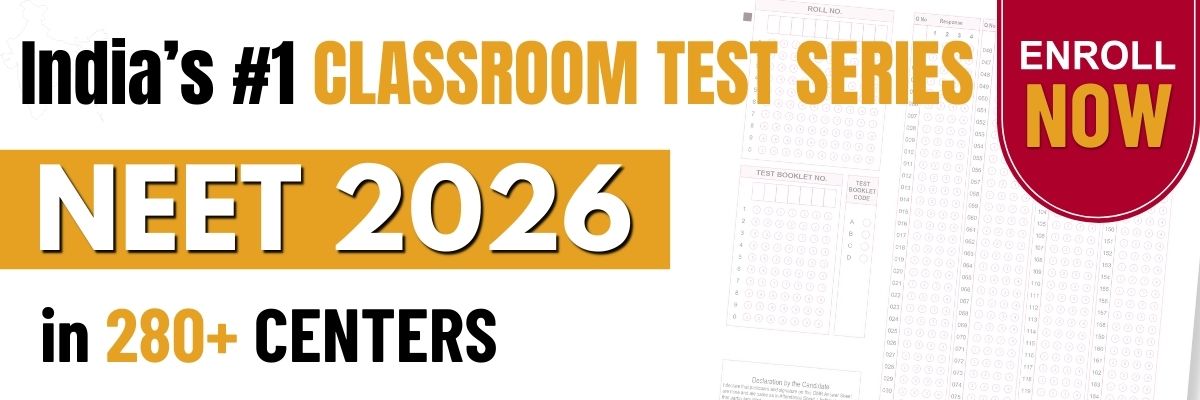Select Question Set:
Which of the following law states that \(\lambda_{m}\) is inversely proportional to absolute temperature?
(where \(\lambda_{m}\) is the wavelength at which maximum energy is emitted)
1. Stefan’s law
2. Rayleigh-Jeans law
3. Maxwell-Boltzmann law
4. Wien’s displacement law
Subtopic: Wien's Displacement Law |
86%
From NCERT
Please attempt this question first.
Hints
Please attempt this question first.
Three rods of identical dimensions but made of materials of conductivities \(K,~2K,~K\) are connected in series. The two ends \(A~,B\) are maintained at temperatures of \(0^{\circ} \text{C},~100^{\circ} \text{C}\) respectively. Assume no loss of heat from the sides. The temperatures of the junctions \(X,~Y\) are:

1. \(25^\circ\text C,~75^\circ\text C\)
2. \(40^\circ\text C,~60^\circ\text C\)
3. \(20^\circ\text C,~80^\circ\text C\)
4. \(30^\circ\text C,~70^\circ\text C\)

1. \(25^\circ\text C,~75^\circ\text C\)
2. \(40^\circ\text C,~60^\circ\text C\)
3. \(20^\circ\text C,~80^\circ\text C\)
4. \(30^\circ\text C,~70^\circ\text C\)
Subtopic: Conduction |
70%
From NCERT
To view explanation, please take trial in the course.
NEET 2026 - Target Batch - Vital
Hints
To view explanation, please take trial in the course.
NEET 2026 - Target Batch - Vital
A beaker contains \(1000\) g of a liquid that is stirred at its boiling point. A \(100\) W electric heater is completely immersed in the liquid. The heater provides the liquid with thermal energy, and \(200\) g of the liquid changes to vapour in \(1600\) s.
What is the specific latent heat of evaporation of the liquid?
(Assume that no thermal energy is transferred to or from the surroundings, and no vapour condenses.)
1. \(12.5\) J/g
2. \(160\) J/g
3. \(3200\) J/g
4. \(800\) J/g
What is the specific latent heat of evaporation of the liquid?
(Assume that no thermal energy is transferred to or from the surroundings, and no vapour condenses.)
1. \(12.5\) J/g
2. \(160\) J/g
3. \(3200\) J/g
4. \(800\) J/g
Subtopic: Calorimetry |
79%
From NCERT
Please attempt this question first.
Hints
Please attempt this question first.
Two rods \(A\) and \(B\) having the same length of \(1\) m are at the same temperature \(30^\circ \text{C}.\) The coefficients of linear expansion of \(A\) and \(B\) are in the ratio \(4:3.\) At what temperature will the length of \(B\) be the same as the length of rod \(A\) at \(180^\circ \text{C}\)?
| 1. | \(200^\circ \text{C}\) | 2. | \(230^\circ \text{C}\) |
| 3. | \(250^\circ \text{C}\) | 4. | \(270^\circ \text{C}\) |
Subtopic: Thermal Expansion |
79%
From NCERT
Please attempt this question first.
Hints
Please attempt this question first.
A \(100\) g of iron nail is hit by a \(1.5\) kg hammer striking at a velocity of \(60\) ms–1. What will be the rise in the temperature of the nail if one-fourth of the energy of the hammer goes into heating the nail?
[Specific heat capacity of iron = \(0.42\) Jg–1 °C–1]
[Specific heat capacity of iron = \(0.42\) Jg–1 °C–1]
| 1. | \(675\)°C | 2. | \(1600\)°C |
| 3. | \(16.07\)°C | 4. | \(6.75\)°C |
Subtopic: Temperature and Heat |
65%
From NCERT
JEE
Please attempt this question first.
Hints
Please attempt this question first.
In an experiment to verify Newton's law of cooling, a graph is plotted between the temperature difference \((\Delta T)\) of the water and surroundings and time as shown in the figure. The initial temperature of the water is taken as \(80^\circ\text C.\) The value of \(t_2\) as mentioned in the graph will be:


| 1. | \(12\) | 2. | \(14\) |
| 3. | \(16\) | 4. | \(18\) |
Subtopic: Newton's Law of Cooling |
From NCERT
JEE
Please attempt this question first.
Hints
Please attempt this question first.
Given that the coefficient of linear expansion of brass is \(\alpha=0.00002^\circ \text{C}^{-1},\) what rise in temperature is required to increase the length of a brass rod by \(1\text{%} \text{?}\)
1. \(750^\circ \text{C}\)
2. \(500^\circ \text{C}\)
3. \(200^\circ \text{C}\)
4. \(100^\circ \text{C}\)
1. \(750^\circ \text{C}\)
2. \(500^\circ \text{C}\)
3. \(200^\circ \text{C}\)
4. \(100^\circ \text{C}\)
Subtopic: Thermal Expansion |
86%
From NCERT
Please attempt this question first.
Hints
Please attempt this question first.
Two rods, one made of copper and the other made of steel, of the same length and same cross-sectional area are joined together. The thermal conductivity of copper and steel are \(385~\text{Js}^{-1}\text{K}^{-1}\text{m}^{-1}\) and \(50~\text{Js}^{-1}\text{K}^{-1}\text{m}^{-1}\) respectively. The free ends of copper and steel are held at \(100^\circ \text{C}\) and \(0^\circ \text{C}\) respectively. The temperature at the junction is, nearly:
1. \(12^\circ \text{C}\)
2. \(50^\circ \text{C}\)
3. \(73^\circ \text{C}\)
4. \(88.5^\circ \text{C}\)
1. \(12^\circ \text{C}\)
2. \(50^\circ \text{C}\)
3. \(73^\circ \text{C}\)
4. \(88.5^\circ \text{C}\)
Subtopic: Conduction |
74%
From NCERT
NEET - 2022
To view explanation, please take trial in the course.
NEET 2026 - Target Batch - Vital
Hints
To view explanation, please take trial in the course.
NEET 2026 - Target Batch - Vital
The shapes of the black body radiation curves depend on their:
1. Masses
2. Surface areas
3. Materials
4. Temperatures
1. Masses
2. Surface areas
3. Materials
4. Temperatures
Subtopic: Radiation |
63%
From NCERT
Please attempt this question first.
Hints
Please attempt this question first.
A pan filled with hot food cools from \(95^\circ \text{C}\) to \(85^\circ \text{C}\) in \(2\) min when the room temperature is \(20^\circ \text{C}.\) The time taken by the food to cool from \(55^\circ \text{C}\) to \(45^\circ \text{C}\) will be:
1. \(260\) s
2. \(280\) s
3. \(300\) s
4. \(320\) s
1. \(260\) s
2. \(280\) s
3. \(300\) s
4. \(320\) s
Subtopic: Newton's Law of Cooling |
79%
From NCERT
Please attempt this question first.
Hints
Please attempt this question first.
Select Question Set:




